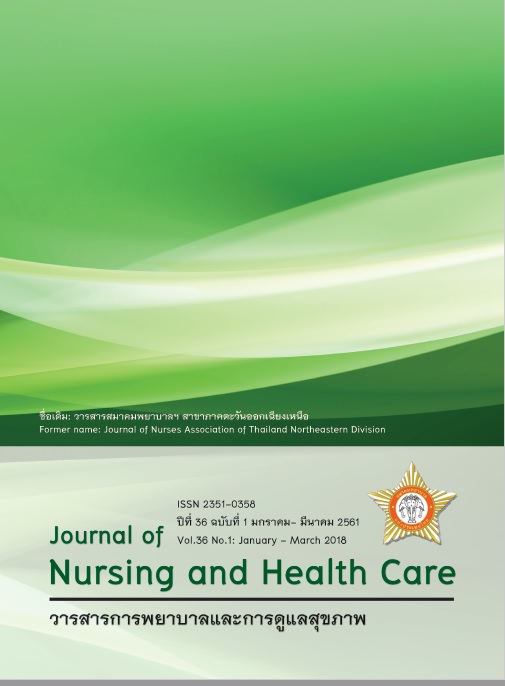การพัฒนารูปแบบคุณภาพบริการด้านการดูแลผู้ป่วยสู่ความเป็นเลิศ โรงพยาบาลร้อยเอ็ด The Model Development Quality Services of Patient Care for Excellence in Roi-Et Hospital
Abstract
This participatory action research aimed to develop and evaluate the quality of patient care services for
excellence in Roi-Et Hospital. The study participants included: 1) 37 nursing administrators; and 2) 84 nurses in
the Nursing Research Committee and the Case Management Development Committee. Data collection included
3 phases: 1) preparing academic and research methodology of researcher; 2) research phase including analyzing
the situation, developing plan, practicing and observation, reflection and evaluation, and revising action plan ; and
3) evaluating the outcome of the model. The data collected including group discussions, participatory observation,
interviews, brainstorming, and clinical record checklist. All data collection process was conducted during June 1,
2016 to January 31, 2018. Data analyzed using descriptive statistics, frequency distribution and percentage and
for the qualitative data were analysis by content analysis.
The outcomes of analyze situation of nursing care reveled that: 1) the nurses were lack of knowledge about
the skills in nursing practice on academic evidence, the knowledge were not distributed to all of the level of
nursing, and it was unclear of the evaluation outcomes of nursing care development program; 2)the model of
nursing care program for nursing administrator to support the nursing care were unclear; and 3) the factors to
support about development including the clear policy and vision of the nursing administrator, leadership skills and
cooperation of nursing department.
The Model Development Quality Services of Patient Care for Excellence in Roi-Et Hospital included :
1) SWAOT Analysis quality of nursing service with 16 branches according to service plan and develop best
practices for preterm high risk, safety of toxemia of pregnancy, hypovolemic shock in patients abdominal injuries,
safety in cancer patients receiving radiation therapy, palliative care in end of life, prevent complications in alcohol
withdrawal patients, safety of cardiovascular patients who undergo cardiac catheterization, promotes the cure of
foot ulcers in diabetic patients, discharge plan for AIDS patients, renal replacement therapy, help children women
and family members with violence, organ transplantation, emergency crisis management in emergency department
sepsis management, prevention of urinary tract infection, pressure ulcers, and pneumonia; 2) the nursing care
system is managed by the nurses in 16 branches; 3) creation of a project manager to facilitate the nursing system
and expert advisory system; 4) structure of a learning center for all nursing services, journal club activities,
conferencing case and source of information; 5) supervision of nursing practice in two systems-supervision by
supervisors and inspectors and clinical supervision by 16 case managers; 6) evaluation of nursing service quality
outcomes, including the support of nursing team leaders. There are 16 branches of service for patients with 24
case managers. Staffs are satisfied in the job. The model is feasible, appropriate, accurate, useful, and highly
acceptable. Therefore, the developed model should be used continuously.



